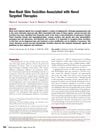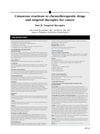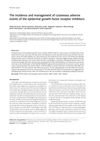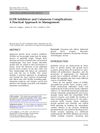The Management of EGFR Inhibitor Adverse Events: A Case Series and Treatment Paradigm
January 2012
in “
International Journal of Dermatology
”
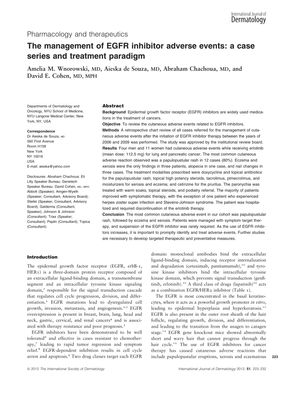
TLDR Skin side effects from EGFR inhibitor cancer treatment can be managed effectively, often without stopping the medication.
A retrospective chart review was conducted on 15 patients (4 men and 11 women) who experienced cutaneous adverse events after starting treatment with the EGFR inhibitor erlotinib for lung and pancreatic cancer between 2006 and 2009. The most common adverse event was a papulopustular rash, occurring in 12 patients (80%), with other events including eczema, xerosis, alopecia, and nail changes. Treatment strategies included doxycycline and topical antibiotics for the rash, topical steroids and moisturizers for xerosis and eczema, and cetirizine for pruritus. Paronychia was managed with warm soaks, topical steroids, and podiatry referral. Most patients improved with symptomatic therapy, and discontinuation of erlotinib was rare, except for one patient who developed herpes zoster superinfection and Stevens-Johnson syndrome, necessitating hospitalization and cessation of the EGFR inhibitor. The study highlights the need for prompt identification and treatment of adverse events associated with EGFR inhibitors and calls for further research to develop targeted treatments and preventative strategies.
